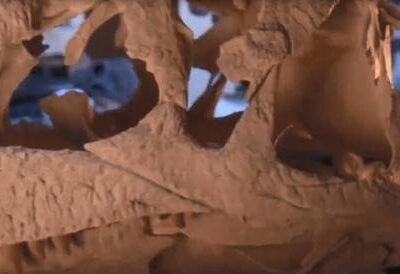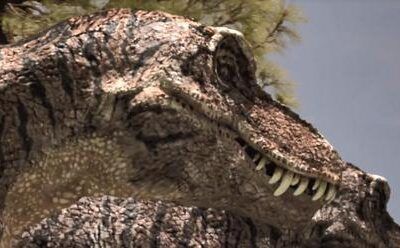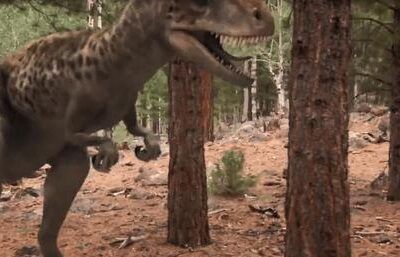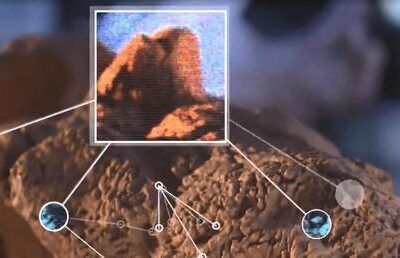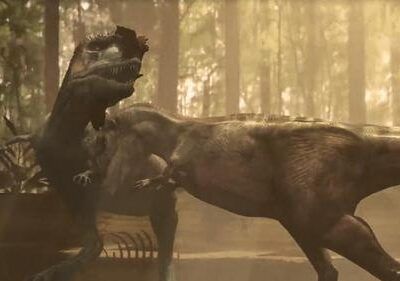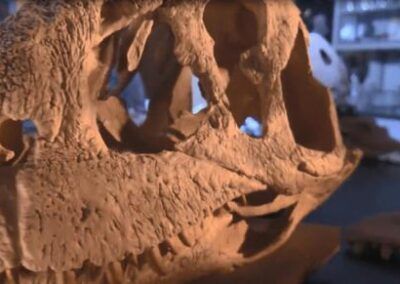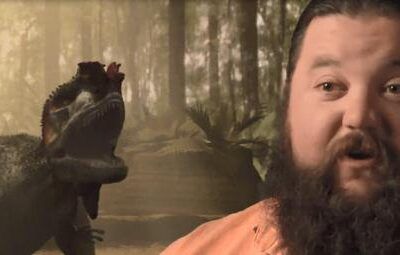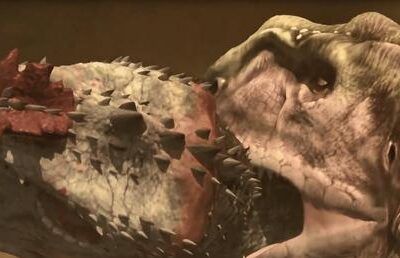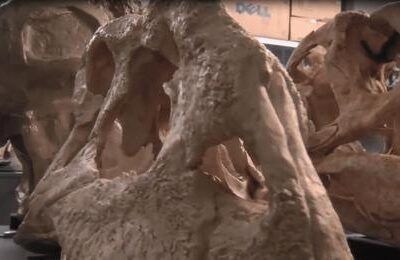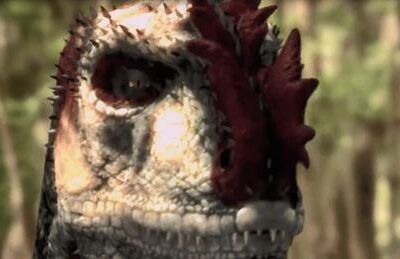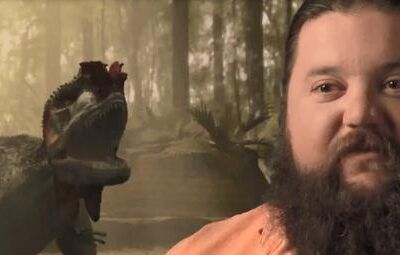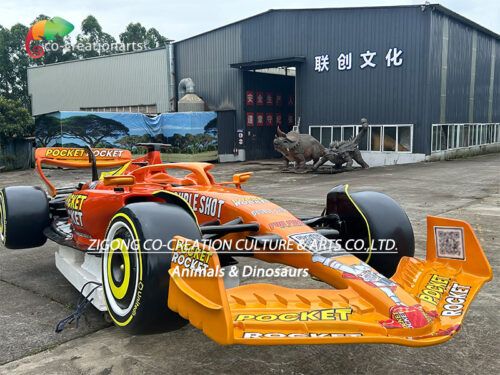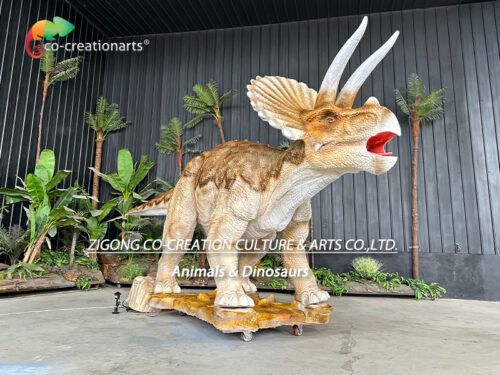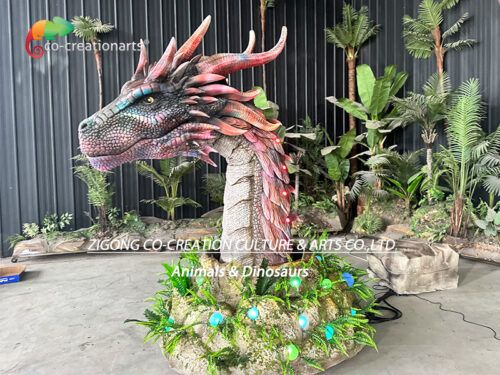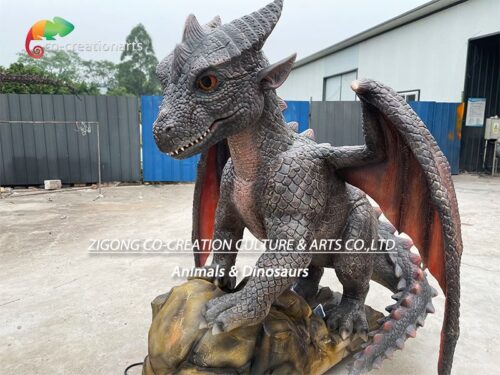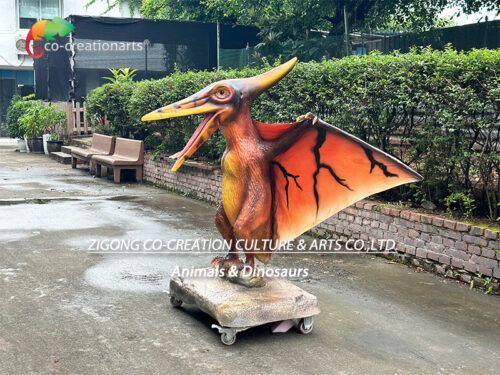Dr. Lawrence M. WITMER, PROFESSOR OF ANATOMY AT Ohio UNIVERSITY: When the first intact Majungasaurus bone was found, one of the things that was obvious was this very complicated and rough looking bump on its head. We now know that many different dinosaurs, including many predatory dinosaurs, like Ceratosaurus, Allosaurus, and even some species of T-Rex, had various horn-like structures or projections on their heads.
Dr. Philip Curry, Professor of dinosaur Studies at the University of Alberta: I think that most of these theropod dinosaurs have display structures on their heads, and it probably has to do with the recognition mechanisms that these animals have, so that their potential male rivals can tell that there are other males pursuing their females, the ones they’re interested in or they can use it to tell the females that they’re the right age, that they’re interested in them.
These extreme features of Majungasaurus may also have something to do with its environment. If you have a small group of animals separated in a small area, then inbreeding between close relatives is inevitable, and over a long period of time and over many generations, we can see the variation caused by inbreeding.
In the case of Majungasaurus, we’ve found too few skeletons to be sure what the species looked like in general? But we can certainly speculate that because they lived on an island, they were isolated from other similar dinosaurs, and these ugly faces could be the result of that mutation.

